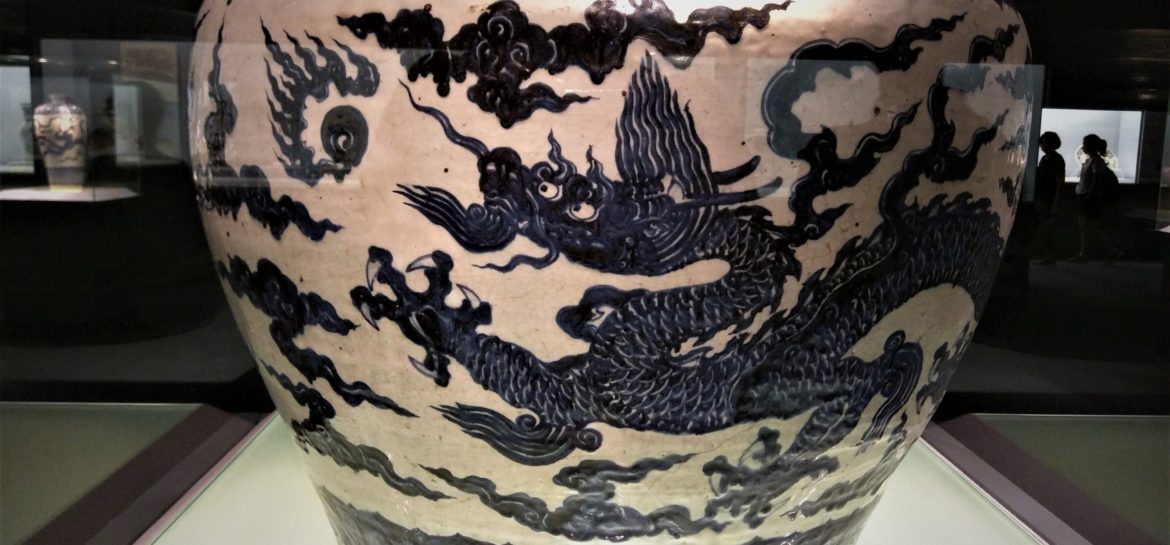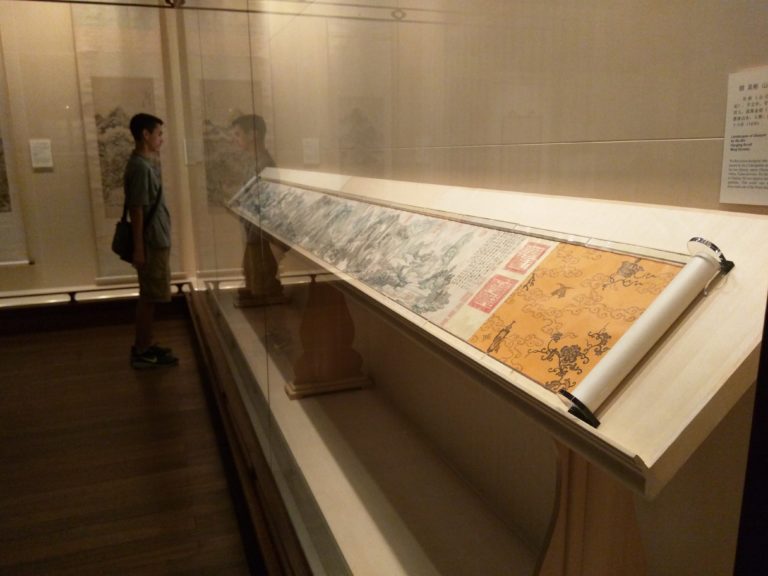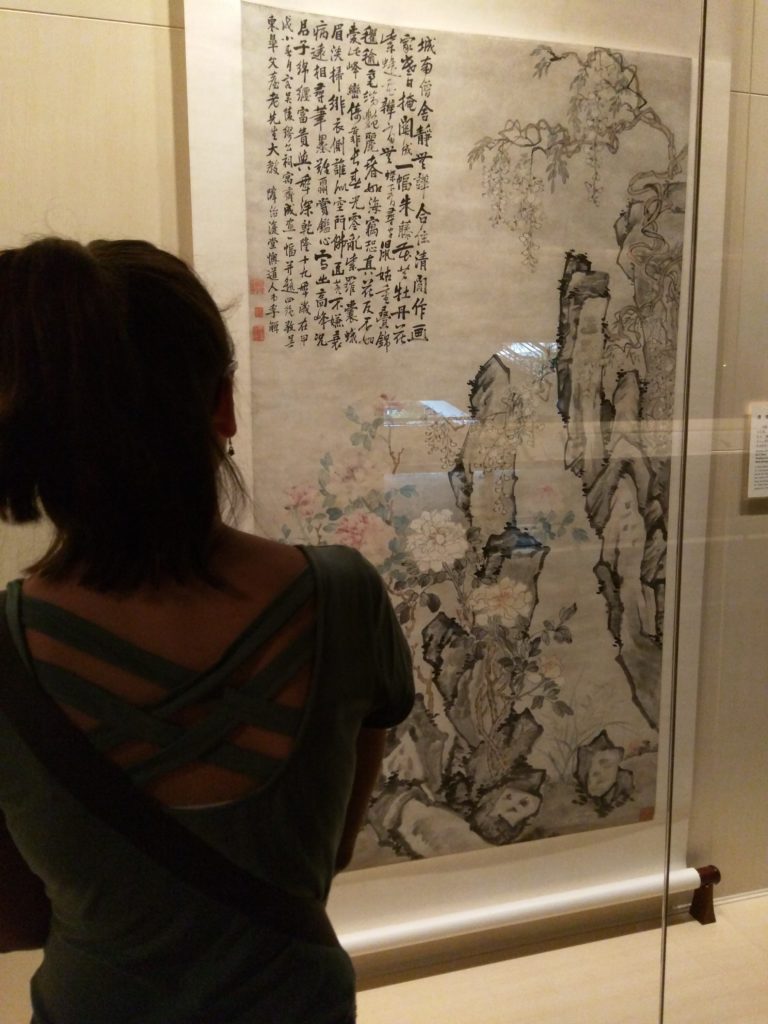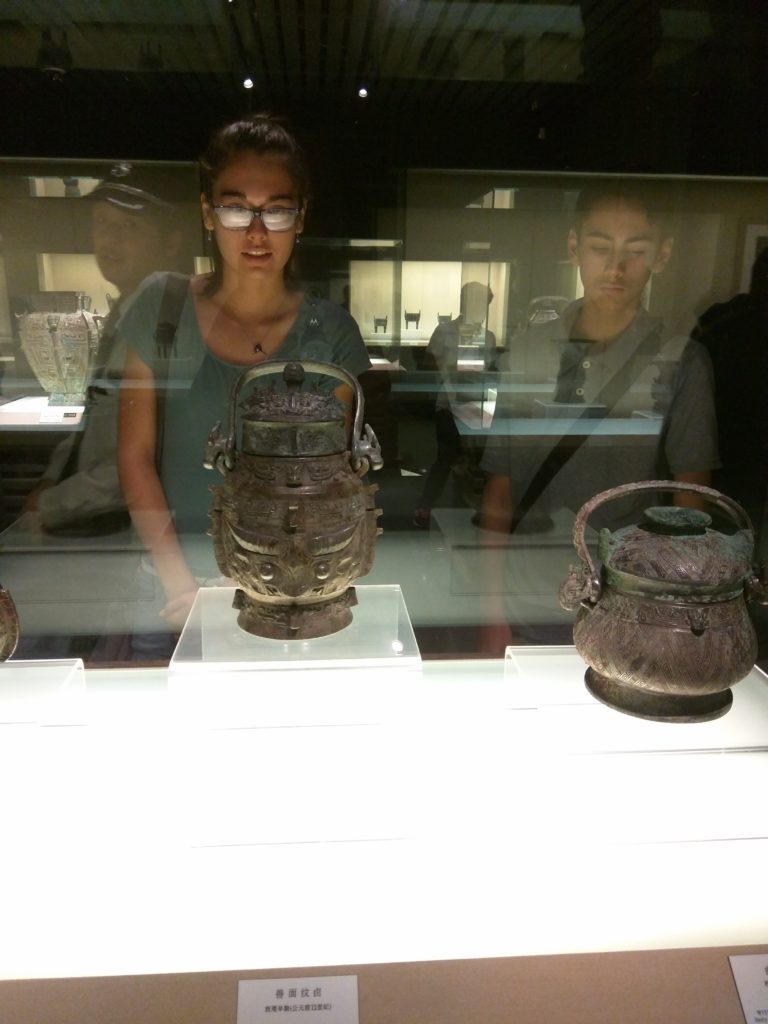
We live in the present, we dream of the future and we learn eternal truths from the past. Soong Mei-Ling
One of the things you realize when in China, even in a modern city like Shanghai, is that to understand this vast country you have understand something of its equally vast history. I have been listening to a lecture series in my free time called “5,000 years of Chinese History”. (Sigh. Yes, this is true.) And though there is debate among historians for how exact “5,000” years is, let me tell you what isn’t argued, Chinese history goes back a LONG, LONG time. That may be literally true of anywhere, but China’s history, more than most other countries, is a continuous, culturally-unified progression. Sure, dynasties came and went. Even Genghis Khan and the Mongols came and went. But through it all the Chinese people and their culture remained unbroken. This is remarkable.
Several weeks ago, we successfully went to The Shanghai Museum which features ancient Chinese art and artifacts. I say successfully because the first time we tried to go, the 3-hour line in the sweltering sun scared us away. After a disappointing visit to the Science and Technology Museum later, (this museum can safely reside on an “Oops, I missed it” list) we tried The Shanghai Museum again and were in awe. This museum is a must see for any visit to Shanghai.

Located in the Peoples Square area of the city, the museum is free to enter but limits its visitors to 8,000 people a day. As a testament to the love and appreciation the Chinese people have for their history, the daily visit limit is regularly met. Our line on a cool and rainy day was minimal and moved quickly. The museum has collections spread out into distinct rooms which span 4 floors, making it easy to see it all as you move between each collection. We started at the top with the coins and worked our way down through halls of furniture, ceramics, sculptures, calligraphy, and paintings.

Chinese history spans dynasties that were defined by ruling families and have names like Qing, Han, Ming and so on. The first dynasty of China was the Xia which started in 2070 BC. Little archaeological evidence remains from this time, so many believe the Shang dynasty which started in 1600 BC the first. Before the Xia there are defined kingdoms and emperors known to many Chinese today, but the events of these times are only referred to in mythological stories and references from later dynasties, making their historic accuracy debatable.



In the United States, the general population might know of some historic dates like 1776 or 1863, but in China I’ve read that schoolchildren commonly memorize poems from 1,800 years ago. Again, the long thread of Chinese history is everywhere. We learned while at the museum that though statesmen in other countries were often politicians or military leaders, forcing artists and poets into the disenfranchised “fringe”, more often in China poets and artists were part of the ruling class. This may be why so much of Chinese history is, indeed, art.



The collections in the museum are truly beautiful. Janna and Marco were continually amazed at the age of some of the pieces. The handicraft and the artistic details of each piece, from bronze bells with their bright melodic tunes, to the large dragon themed porcelain vases are mesmerizing.
Bianshong Bells – Western Zhou Dynasty circa 1050 BC
A history museum that can hold the interest of a 12 and 14 year old is indeed a good one. There is much more to come on Chinese history – we have just lightly dusted the surface – but the Shanghai Museum gave us a good start.


